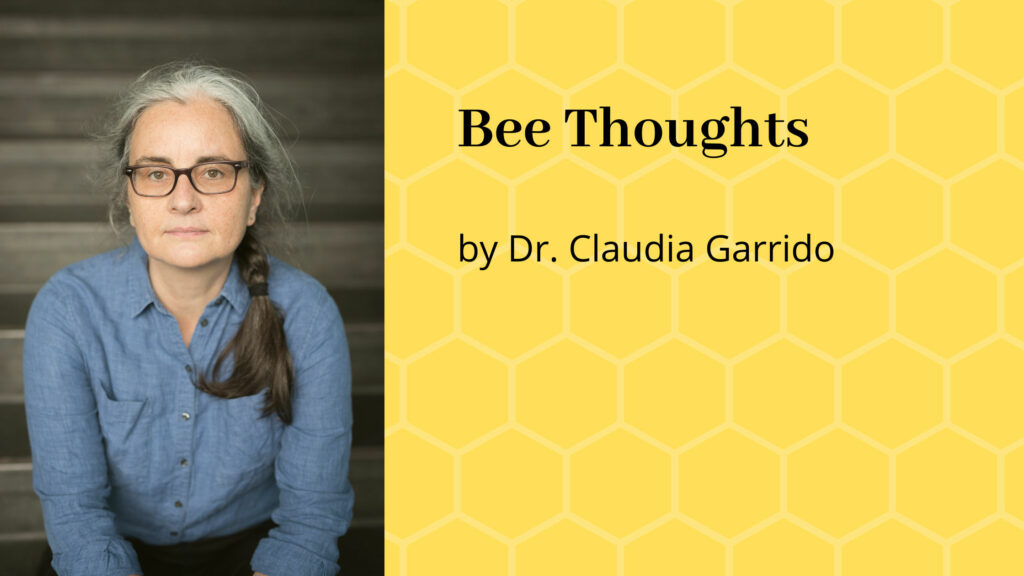One of the phrases I remember very clearly from the online info session EFSA did after publishing their review of the bee guidance is the attempt of doing a “more realistic risk assessment on bees”. Which, on the one hand, they achieved quite well, in my opinion. On the other hand, it made me remember some heated discussions in which missing realism was one of the criticized point. Though, compared to the previous practice, already the 2013 version was a big step forward.
However, there were some things that had to be improved. One thing that disturbed me personally: the “standardization” of the assessments was at the first place. As like to say: biological systems can’t be standardized. There are some basic principles, some “rules”, but the outcome or expression we observe will always move within a range. Which can be larger or smaller depending on a variety of parameters. No two studies will look exactly the same.
What can be standardized though: The methods and procedures. This is under the control of the CRO (Contract Research Organisation) which performs the studies. Following a protocol is something you learn very early when studying science. Setting up a study with the correct methods for a specific question is the very foundation of research.
The new realism: Field studies in the center of risk assessment
One of the largest criticisms by many beekeepers of the risk assessment: that lab testing and semi-field studies don’t represent the situation in the colonies. Which is partially true. A few bees in a cage in the lab or small colonies in tunnels aren’t the same as full colonies at a field margin. However, in the lab or in tunnels, you can isolate the effect of single parameters much better than in the field. You see different things and answer different questions. A proper mix is what will give you the best approach to reality.
Therefore, the thing that I like most about this review is the very differentiated strategy to do a realistic risk assessment on bees. When to do which kind of study is clearly defined by the type of risk bees will be exposed to. Field studies are a go-to when these risks are “inconclusive”, meaning that there are different ways of exposure to the pesticides.
Different studies for different risks
Coming out of the lab, there’s good info what’s the main risk for bees – contact or dietary. Field studies are now in the centre of a more realistic risk assessment on bees. It’s “when in doubt, do a field study”. Semi-field (i.e. tunnel) studies apply only if the prevalent risk is via contact.
There’s also a third type of study, that is getting some kind of revival: The colony feeder study. Or what many will know as the “Oomen test”. This applies when the main risk for the colony comes from the exposure of the larvae. So, when the substances are in the larval food.
So, only if these two very specific cases apply, field studies aren’t appropriate. In all other cases, they’re the way to go. There are very clear indications of the study design in the reviewed guidance, too. So, I’m wondering a bit why there’s still so much insecurity about the EFSA guidance. As I said in my latest post: It’s not very probable that this review won’t get endorsed. It’s taking a while, as it often does in the EU, but it will come.
Also consider that the number of qualified CROs is limited. Or better: of people who are able to do these studies. So, when the guidance gets endorsed, there will be a “sudden” need of studies and a only very limited number of slots to do them. The endorsement is announced for spring 2024, without further specification. I’m checking quite regularly and will keep you up to date. Follow me on LinkedIn if you want to stay up to date. A quick notice there is faster than an elaborate blog post… But I’ll share everything here, too, obviously.
Realistic risk assessment on bees as a chance
Finally, I would like to reframe this insecurity about the changes to come. I know that changes are uncomfortable, but things change all the time. In this case, I see a chance in field studies that goes beyond the common discussions. They can be done in the crops where the pesticides are actually used. Semi-field studies are usually done with phacelia. Which needs a lot of water and doesn’t like too much heat.
In addition, as I said: Biological systems are difficult to standardize. Phacelia is attractive to bees, but it’s totally different to oilseed rape, apple flowers, or other flowering crops. Which look different, the bees treat them differently, and the flowering season may be at a completely different time. The EFSA guidance includes a list of crops with their attractiveness for bees. So, in a first step, we would look at the list of intended uses of a pesticide asking: “Which one is the most probable to create issues for bees after application?”. Then, you do the field study in exactly that crop.
Even with this new guidance there will still be risks and issues. But it will increase credibility. Because it’s not just a “surrogate” on which the products got tested. Which doesn’t feel like “realistic risk assessment on bees” at all. It will take a lot of learning and work to do everything the “new” way. But this takes one or two years and it’s done. I’m not even convinced that the costs for studies will go up. Watering Phacelia was getting quite a factor in the past years. And also semi-field studies are personnel-intensive.
Is this reviewed guidance perfect? Obviously not. There will be more changes in the future. But compared to every bee guidance before, it’s definitely more realistic.

